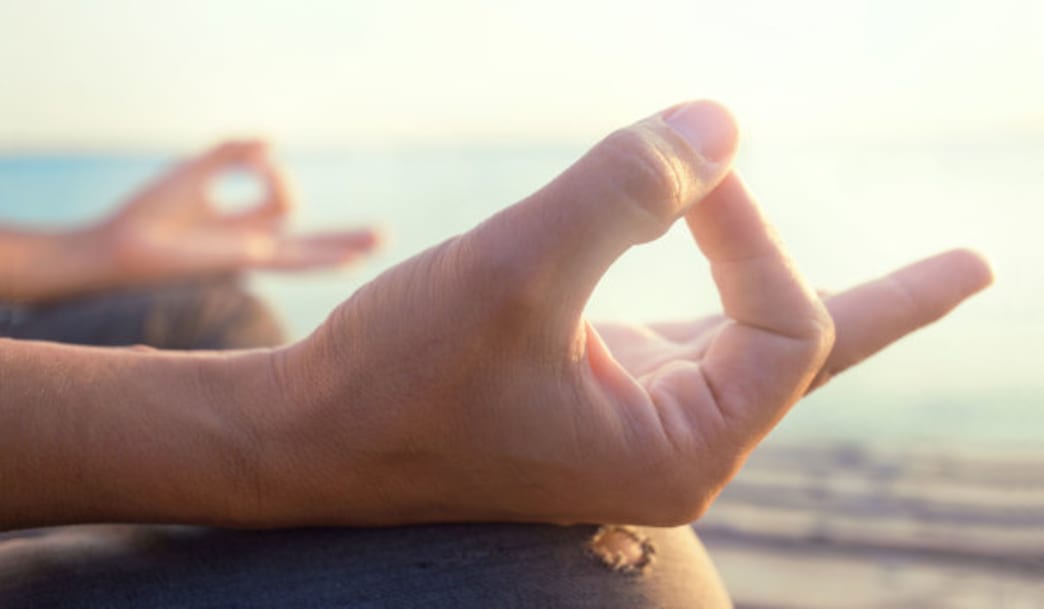
Attacking Pain From All Angles
Share
Q: The news seems to be full of stories these days about people becoming addicted to opiates and prescription painkillers. Is there a better way to deal with pain using natural pain killers? -Jeff W., Bend, Ore.
A: Making a positive change starts with awareness of a problem, exploring creative solutions, and making a commitment to the brighter, more vital path. The tragedy (for people, families, communities, and institutions) of drug addiction is that the pain created by addiction is much worse than the original injury. But the good news is that there are many well-documented and useful methods of easing pain without the scourge of addictive pharmaceuticals.
Here's my top 10 list of natural pain killers:
1. Acupuncture
Works with a whole-body approach to the energy pathways that conduct information from our sensory organs to our nervous system. When energy "flows," there is less pain, better communication, and improved well-being. Slender filaments placed gently at 5-25 locations on the body per treatment can improve energy flow quite impressively.
2. Bodywork
Pain is felt throughout the body. Explore therapies that make your body feel good, or at least better. Skilled body workers are worth seeking out. Touch can range from super light (Reiki) to penetrating (deep tissue, or neuromuscular therapy), with many variations in between. Another plus: many health insurers cover bodywork.
3. Adjustments
I'm not a big fan of regular chiropractic care, but doing a run of adjustments a few times a year can absolutely help offset the trauma of sitting, or worse, bending over and lifting, if your job requires more than 20 hours a week of either. There are many styles of chiropractic therapy: I always appreciate a doc who will educate me about body mechanics as well as make specific adjustments, based on a good initial assessment and specific diagnosis. After all, if you find out exactly what is causing your back, hip, neck, or foot pain, you can put together a personalized treatment plan with your team of health professionals.
4. Meditation
Can help you get out of your brain, and pain is registered in the brain. It makes sense, then, that meditation helps reduce pain. Shambhala or Vipassana are good places to start learning basic meditation techniques. There are many schools and variations, but they all share a common goal: allowing your mind to relax to the point of not thinking, focusing on breath, and getting into the flow.
5. Move your body
Gently. You do not have to create more pain to get a fitness "gain." Try yoga, Pilates, or Tai Chi. Find a gentle, pleasing movement and engage with it daily for 45-75 minutes.
6. Topical relief
It might make you gag, but urine is an excellent topical pain reliever. Caribbean islanders use it on jellyfish stings and Bedouin nomads apply it to burns for instant pain relief. And for good reason. Urine is basically ammonia, a nitrogen compound, and nitrogen can quickly restore the chemo-electrical imbalances caused within cells by pain and trauma. Luckily, topical creams containing ammonium are available at health food stores. Other useful topicals include Tiger Balm, arnica cream (my favorite is Traumeel), Penetran Plus, Topricin, or a CBD salve.
7. Neuromodulation
With devices like TENS or similar units. Some acupuncturists can apply electroacupuncture, which can also reset nerves and normalize the irritability or pain signal. Some physical therapists have extra training in this effective technique.
8. Quit smoking
Being addicted to tobacco is not only a bummer for your lungs (and the environment) but will also worsen your pain. This is because your body is in chronic detox mode, lowering its potential for healing. There is help to quit smoking no matter where you live. Start with really seeing yourself as a nonsmoker. That's what you deserve.
9. Sleep
My favorite panacea! You want to find the sweet spot where you feel genuinely refreshed in the morning, but you're not sleeping too much as a form of escape. Most adults need at least 7 hours. If you sleep less than 7 hours during the weekday, make sure to schedule extra sleep over the weekend. Try to completely detach yourself from electronic devices for 10 continuous hours a day. If that seems impossible, notice how many hours a day you're not touching your phone, then extend that time by 5 minutes each week for the rest of the year.
10. Water
Which is arguably our most precious natural resource. Being well-hydrated, with good water that has not contacted plastic, absolutely alleviates pain. As a specific example, much low back pain is due to the squishy discs between our bony spinal vertebrae getting flat due to lack of fluid, too much bodyweight, and/or prolonged sitting. You can control all three of these common contributors to low back pain-at very little expense.
Staying hydrated, with water that has not contacted plastic can actually help relieve pain.
Smoking can worsen pain because it puts your body in chronic detox mode, lowering its potential for healing.
Written by emily for Better Nutrition and legally licensed through the Matcha publisher network. Please direct all licensing questions to legal@getmatcha.com.
